Transportation Celebration Coin, 1940
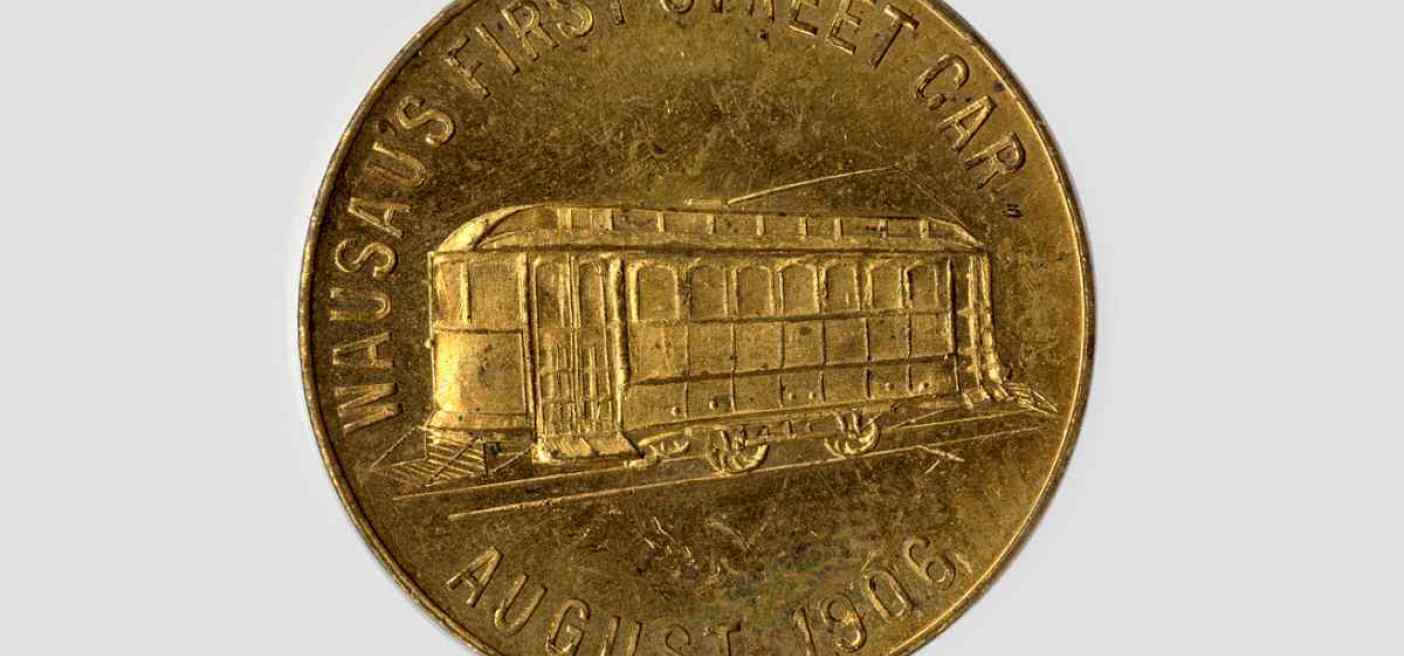
Transportation Celebration Coin, 1940
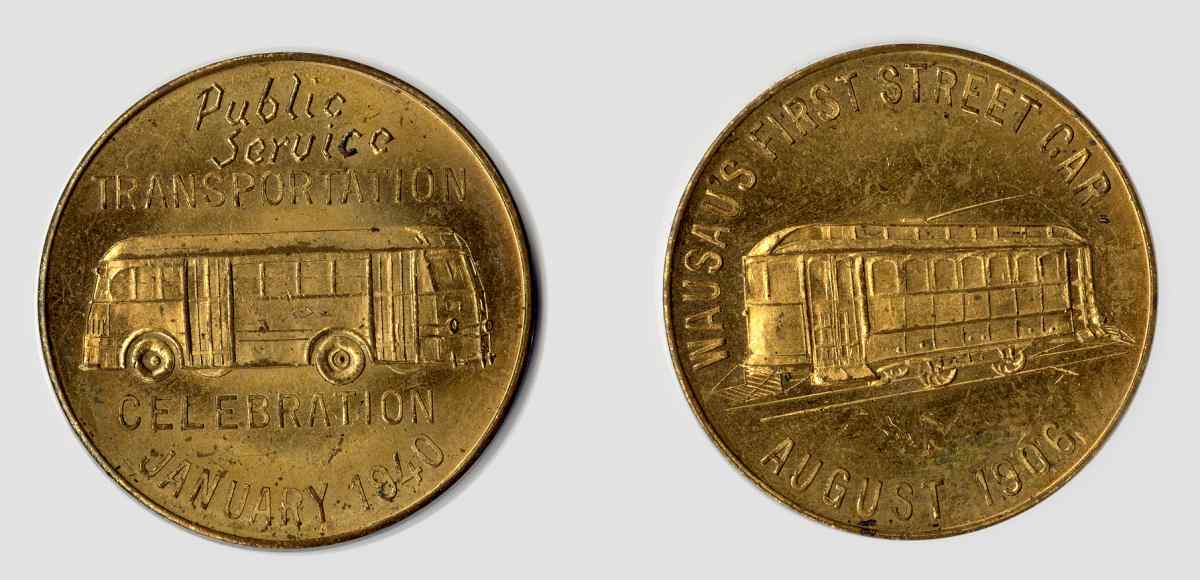
^ Two sides of the Transportation Celebration Coin from the Public Service Corporation (A1980-57-2 and A1980-57-3)
These are the two sides of a coin from our Collections that was originally given out to commemorate the “changing of the guard” in the public transportation of Wausau 80 years ago. One side shows the electric street cars that traveled the streets of Wausau and Schofield starting in 1906. The other side shows the new buses that would be the basis for the local public transist system in the latter half of the century.
The Heyday of the Trolley
1906 saw the founding of the Wausau Street Railway Company, to provide electric street car service. It was a long time coming.
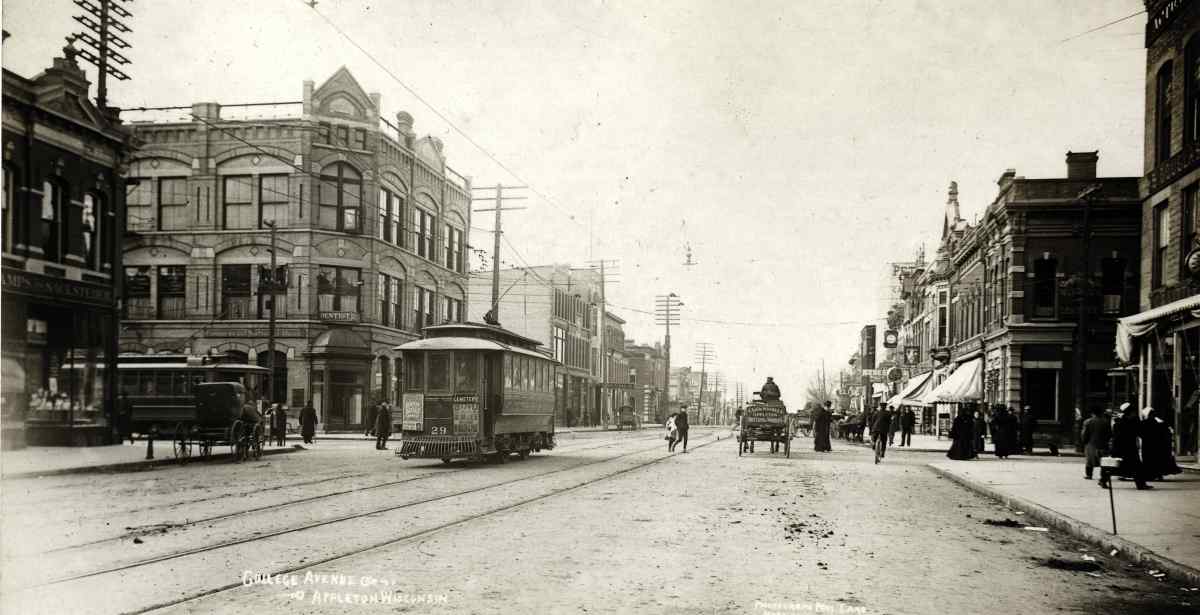
^ Appleton's Electric Street Car memorialized in a postcard by James Colby, circa 1910.
Wisconsin’s first electric street car service was established in Appleton in 1885 (although non-electric, horse-driven trolley service was availble in several cities before then). And over the next twenty years, many of the major cities in the State established their own trolleys.
In Wausau, the public watched as Milwaukee, La Crosse, Eau Claire, Portage, and even their neighbors to the north, Merrill set up electric street cars. Pretty soon, the local supporters of a trolley system argued, Wausau would be the only city of any size in the State without its own electric street cars.
And so in 1906, plans were put in motion to bring a trolley service to Wausau. Originally the line connected downtown Wausau to the residential area a few blocks north, over the Stewart Street Bridge to the West side, and down Grand Avenue into Schofield.
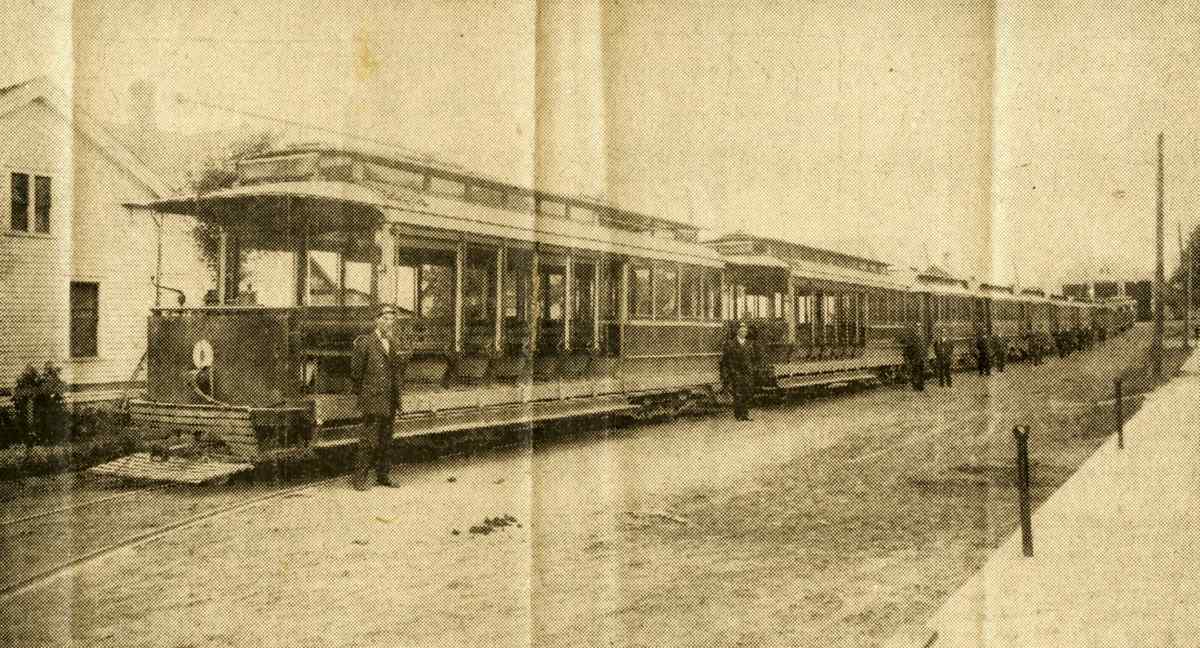
^ Wausau's fleet of trolleys in 1906. It was quickly found that these “California-style cars” were unsuitable for Wisconsin weather, and so they were rebuilt to be fully-enclosed cars (which continued to be used for nearly 35 years).
Over the next few years, important changes occurred for the trolley service. In 1908, the utility company that initially provided electricity for the electric street cars was purchased by the Wausau Street Railway Company, which would be the first step in a journey that would eventually lead to the creation of Wisconsin Public Service Corporation.1
The next big development took place in 1912. The same men who owned the streetcar line (and now also the electric company) were also instrumental in establishing the regions's paper companies, including the one in Rothschild (originally called the Marathon Paper Mill, now known as Domtar). And so with their need to bring in workers to Rothschild (then a small community), they extended the Grand Ave line further south to the paper mill. They also developed the Rothschild Park (and its Pavilion) to be an attraction for Wausau residents to make use of the trolleys during non-work days.
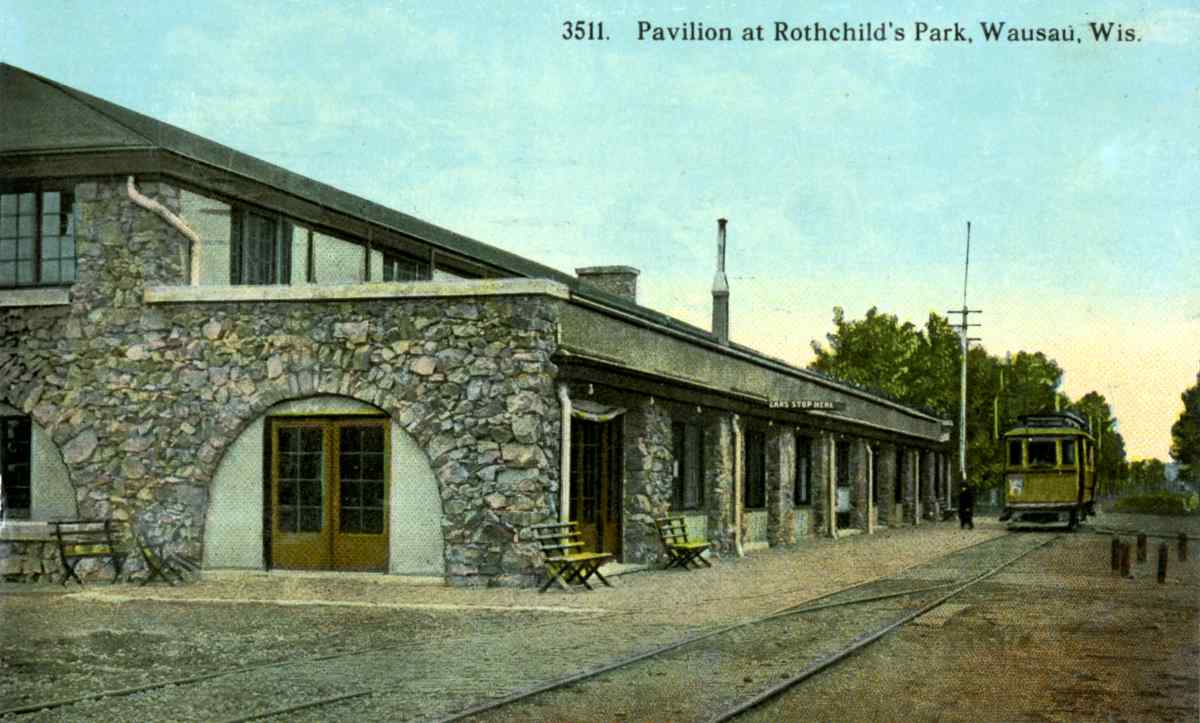
^ A postcard showing a trolley alongside the Rothschild Pavilion. Although some colorized postcards have colored the street cars different colors, they were in fact always yellow in Marathon County as shown here.
Generations of local people rode the trolleys, from teenagers going to a dance at the Rothschild Pavilion, Catholics from the West Side crossing over for Mass (before the West Side churches were established), or just every-day people looking to get to Wausau for some shopping.

^ Most of the routes had rails for single trolleys, but in parts of downtown there were two lanes.
And over the next three decades, the trolley service expanded here and there, such as a major an extension up north to Gilbert Street and St. Mary’s hospital on North Hill.
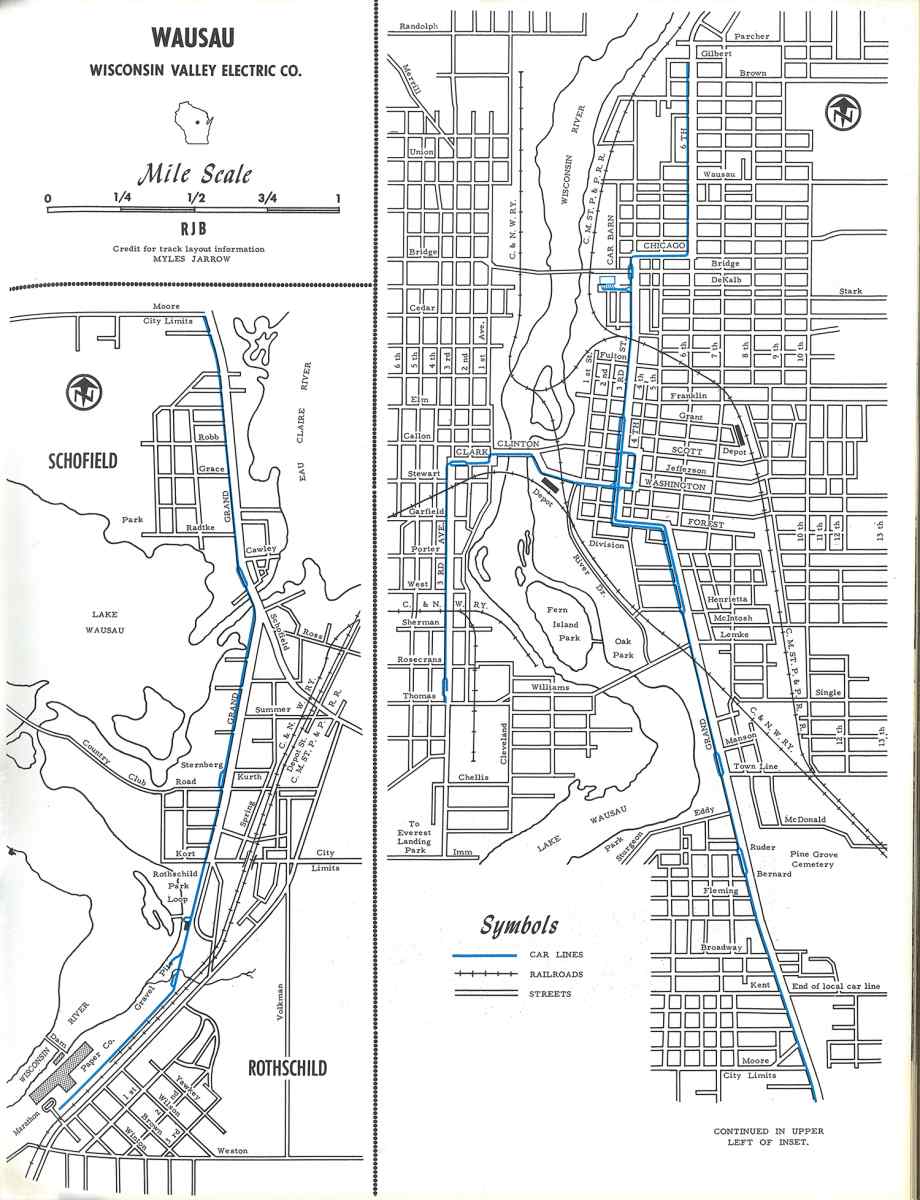
^ Map of the Trolley lines at their height. From the book, Badger Traction (published by the Central Electric Railfan's Association, 1969).
Back when the electric street car first appeared in 1906, they were just about the fastest way to get from place to place. And even in the 1930s, the trolleys were still pretty quick, (at least when on a straight-away, but they had to slow way down to take turns), but the streetcars could be disruptive to the community as well. They could hold up traffic, they were noisy, and their large electromagnetic motors even caused disruptions to radio sets in the houses along the route.
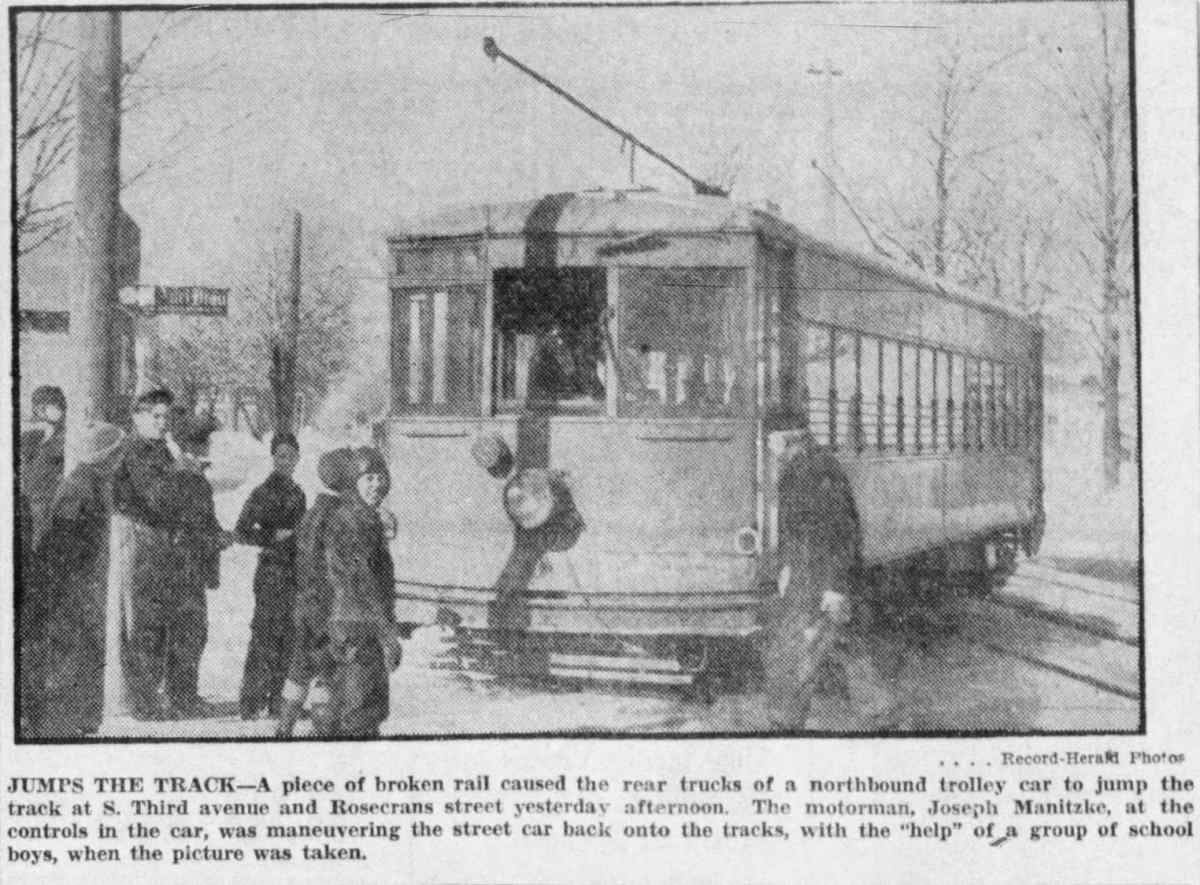
^ Another problem that occasionally occurred was that the trolleys could jump their rails. This rarely caused any injuries in Marathon County, but it was usually a while before the motorman got the trolley back on track.
But the biggest downside was probably the limitations in where the street cars could travel. The prospect of expanding the rails along new streets and electric lines to power the trolleys was a difficult one to justify. And especially during the financial difficulties of the Great Depression in the 1930s, the Wisconsin Valley Improvement Company decided to expand the reach of the public transit system by supplementing the lines by adding buses to ferry customers a few blocks to the trolley line.
And so in late 1939, the Company decided to eliminate the electric trolleys in favor of buses.
The Celebration
Rather than just quietly switch over the type of vehicles, the Company decided to make the transition a public celebration. On January 10, 1940, some 24,000 passengers took advantage of free fares to take one final ride on the old electric street cars, which was dubbed "Transportation Day" by city organizers.
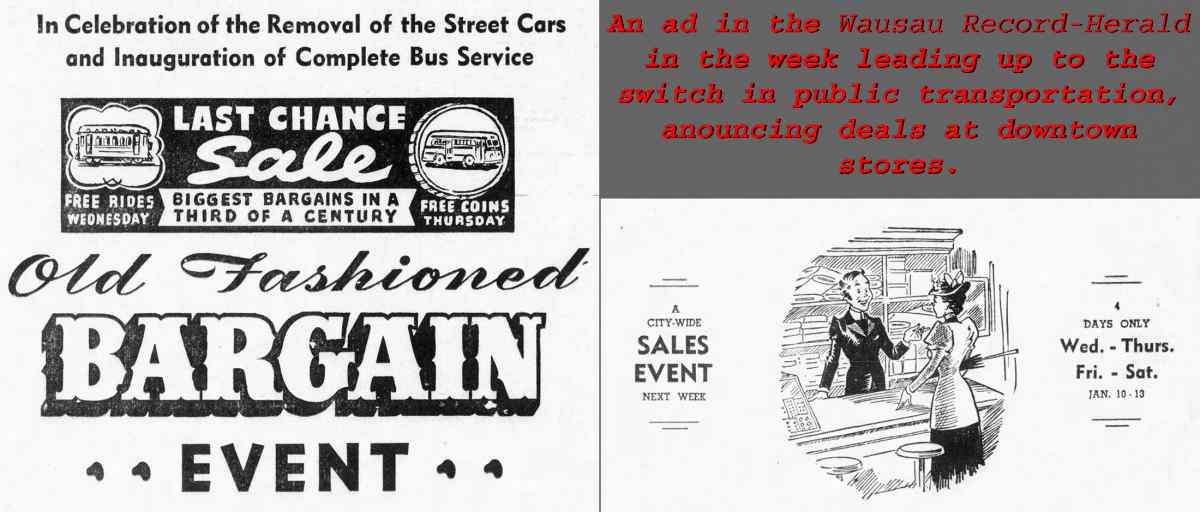
^ The owners of Wausau's shops and stores shrewdly took advantage of the increased trolley trafic by announcing sales at their stores during the celebrations.
That night ("Transportation Night"), some 2,000 people gathered to witness the dedication of the new bus lines and the decommissioning of the trolleys.
Presiding over the ceremonies was the 16-year old, Miss Norma Schmidt of Rothschild, who had been elected from the local schools to serve as the Queen of Transportation. Schmidt stood before the gathered crowd and gave a prepared speech, thanking the old trolleys for their service:
“To you, who have served the humble and exalted of Wausau and its neighbor cities so well during the past third of a century; to you, who through snow and ice, through rain and wind, through sunshine and darkness have traveled our streets, faithful to your appointed task of public conveyor; to you, the last street car, we respectfully offer this final discharge.”
The Queen of Transportation then turned to the new bus:
"To you, hopeful successor to an illustrious past, expectant heir to the riding good will of our community ... we dedicate the care of children going to and from school, the task of bringing our workers to shop, store and office on time and taking them home again to their families, the guidance of the shoppers, the visitors, the infants, the old and the feeble."
"May you do this important work well and faithfully; may you bring to your new task the same devotion of man and equipment that your proud parent, here, the Last Street Car, spent on his task."
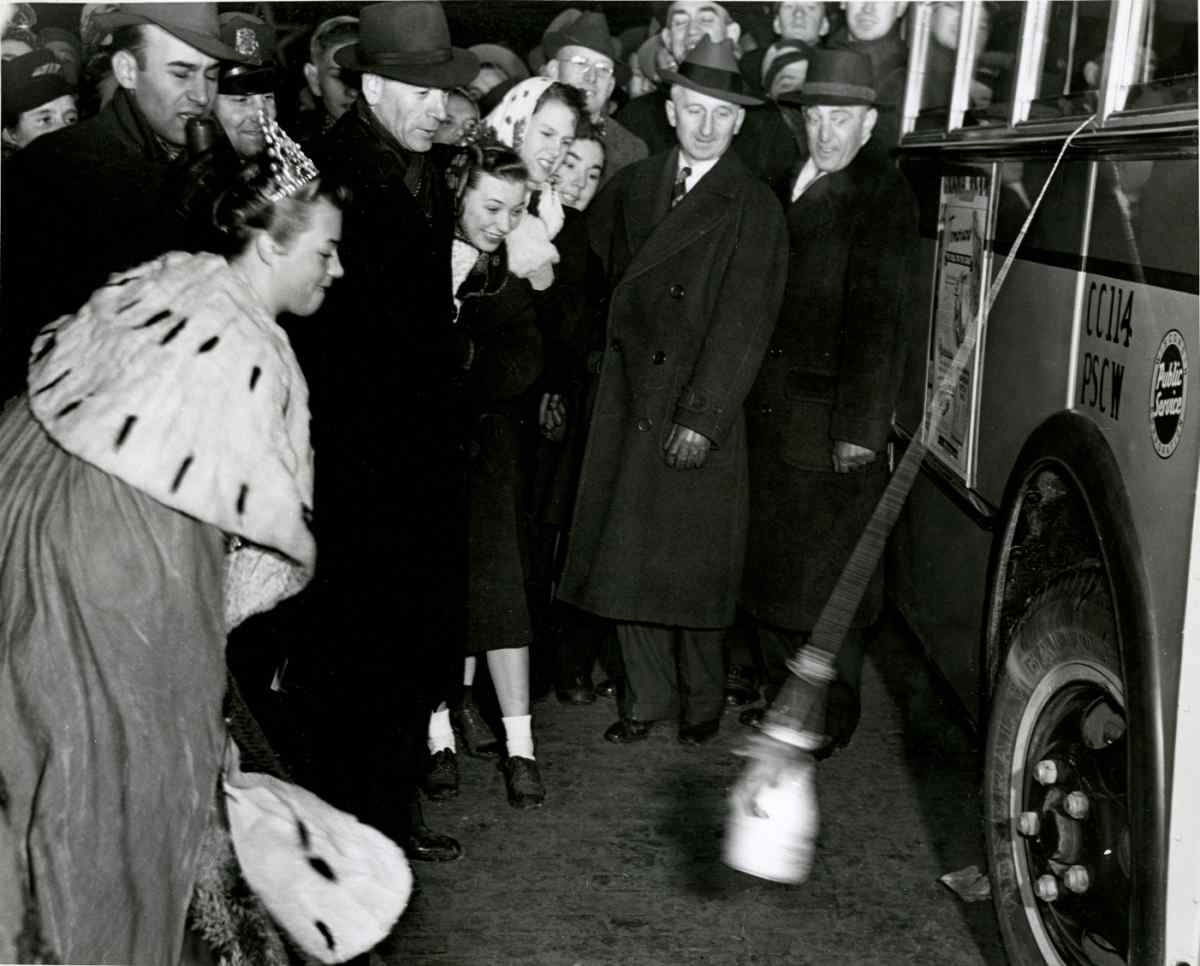
^ Miss Schmidt finished her speech by christening the new bus by breaking a bottle of milk over its hubcap.
Finally Queen Norma, her court, reporters, Company representatives, city officials, and special guests boarded a trolley for its final trip. The trolley was staffed by motorman Martin Christiansen and conductor J.C. Justesen, who had been the operators of the trolley's very first voyage 34 years earlier, and had come out of retirement for its last voyage. Also present was Julius Weinkauf, who had been a passenger on the car's maiden trip.
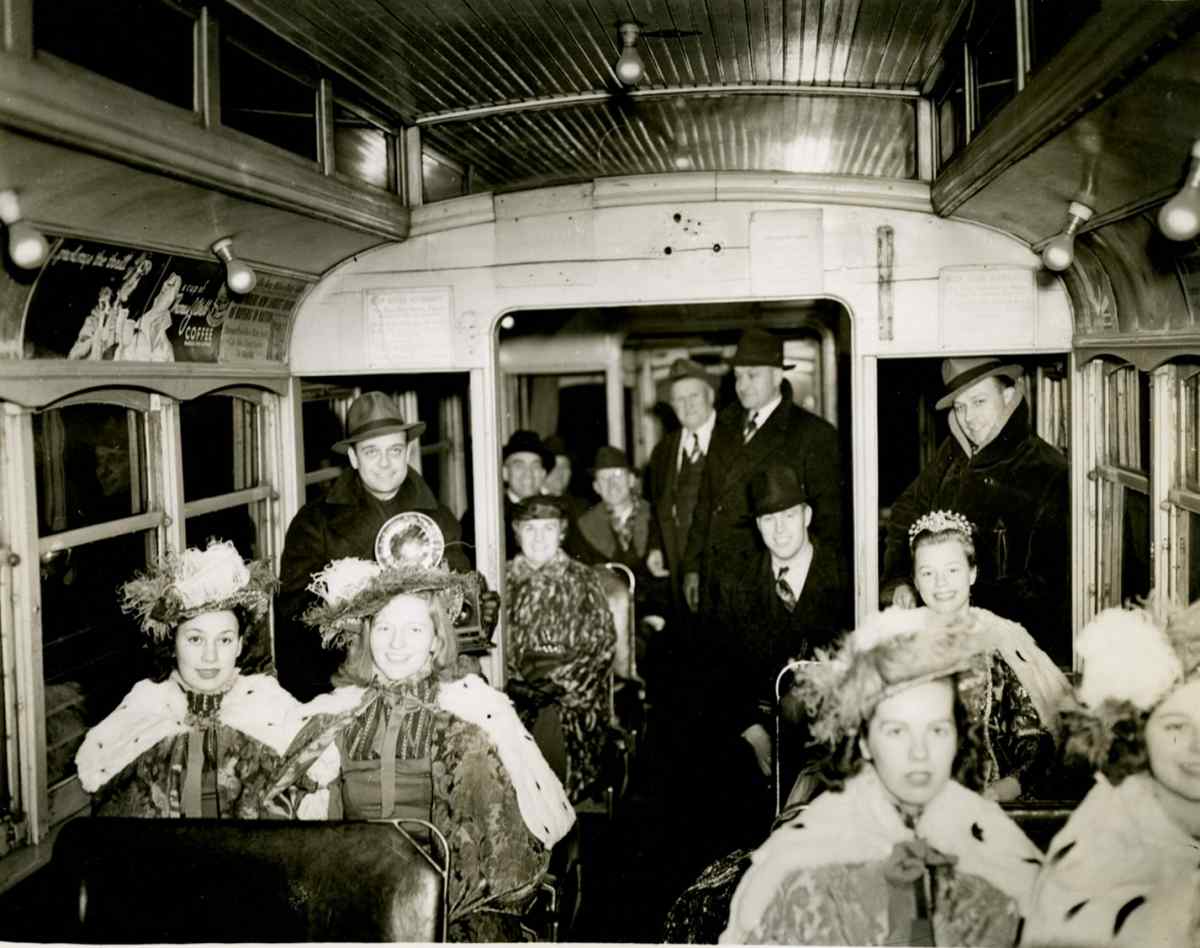
^ The Queen of Transportation and her court seated for the final journey of the trolley in Wausau.
Much of the rails and electric lines were quickly removed from the city streets over the next few years, although some remained for years afterward. But with the breaking of a bottle of milk and the issuing of a commemorative coin, the motorbus had supplanted the electric street car as the public transportation for Marathon County.
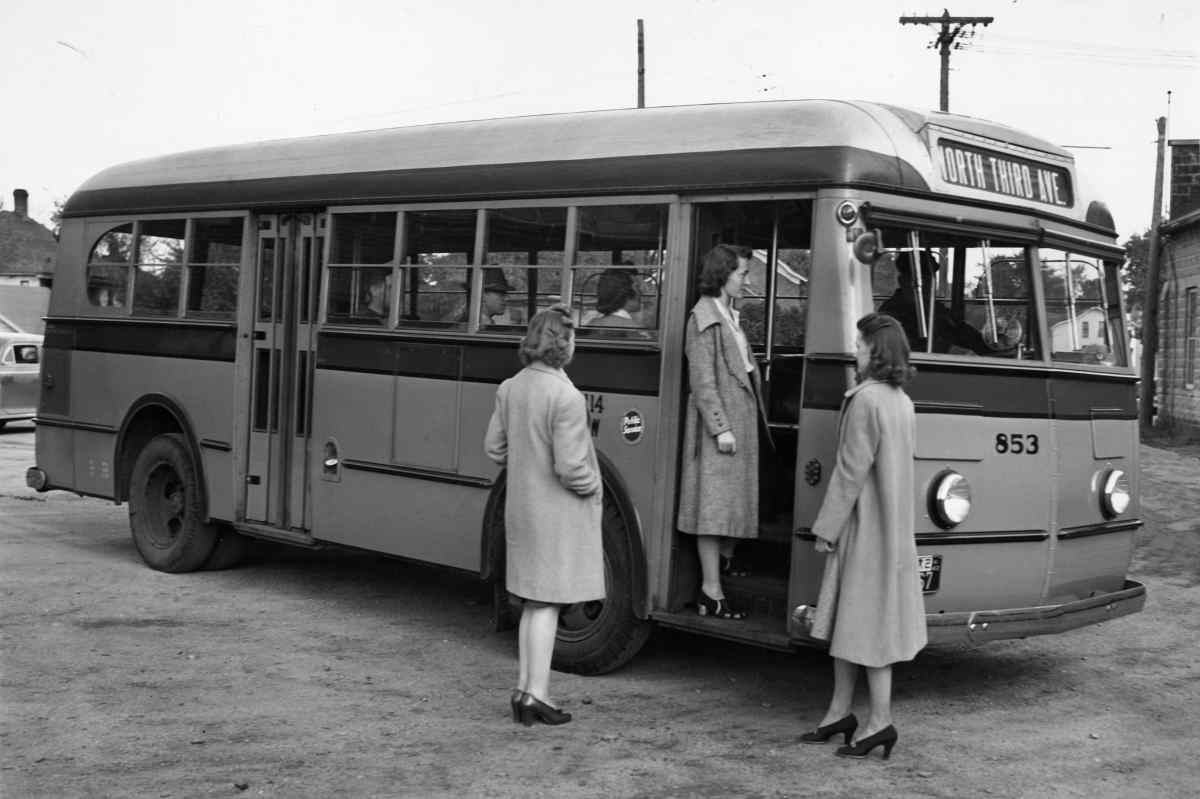
1- The Wausau Electric Street Car Company changed its name to the Wisconsin Valley Electric Company in 1913, with the acquisition of the Merrill Railway and Lighting Company. It would again be renamed in 1933 after being absorbed into the Wisconsin Public Service Corporation. For the sake of clarity, I will refer to the organization that owned the trolleys as "the Company," as Joseph Canfield did in writing the text for "Badger Tractor."
